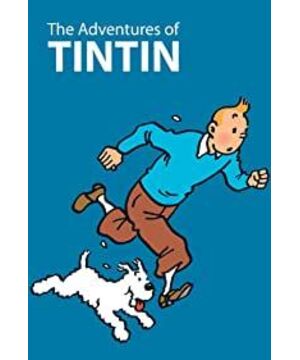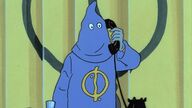The Belgian cartoonist Georges Remi created a series of cartoons under the pseudonym Hergé, Les Aventures de Tintin . It was first published in 1929 and until 1976, it became a classic cartoon in Europe throughout the 20th century. Comics have thus become a microcosm of the history of Western culture and thought from before World War II to the Cold War. The first series of comics is Tintin in the Soviet Union, which laid the tone of the so-called adventure is to go deep into the other. Later, while traveling from Egypt to India, reporter Ding Ding went to China in order to track the Pharaoh cigar smuggling group. The stories also include the Incas in Peru, the Aruba primitive people in the fictional South American country, and the snow-capped monsters in Tibet. Tintin's line of action itself is interesting, which is the so-called East, or the third world. Obviously, the East presented in The Adventures of Tintin is still the East under the unequal gaze of the West, the East of Orientalism.
As the core of the story, the witness of adventures and the explorer of the world, Tintin himself, the viewer follows Tintin's own perspective to intervene in the external world. Arabia, Latin America, Africa and East Asia emerge as Others, sources of wonder. The West described by the author is highly homogeneous, and Tintin and his friends have a decent middle-class life, as if there are no class differences. In contrast, the third world presents a more backward picture, with a vertical class. There are rich Indian kings and Chinese squires, and more are poor ordinary people. As a white male, Tintin is the embodiment of justice, wisdom and kindness. His white friends, despite all their jokes, were also so-called good people. However, among the poor in the East, there are often many robbers from Jiangyang and Yang, representing evil. The Indians who are good at witchcraft will use their eyes to hypnotize others, the poison of the East can make people lose their minds (and the antidote is only available in the Chinese), and the last Incas will use a crystal ball to stun archaeologists, mummified horrifying smiles Originally meant danger... The backwardness, irrationality, danger, adventure and wonder of the East, all the elements mixed together constitute the East in Tintin's adventure, which is actually the East in the eyes of Westerners. In fact, the recurring museums, archaeology, and cultural relics in The Adventures of Tintin were originally places and events with strong orientalist characteristics in history. It needs to be added, however, that there is also a sort of internal orientalism of the West in this story, with the Spaniards being the object of vilification and the representation of the bad guys. The main villain, Rastapopoulos, is suspected of being Jewish. A sign of a bad guy is speaking English with an accent, and pure Anglo-American English is a sign of a good guy.
Tintin's adventures are more about presenting a first-world audience—European readers with an exotic picture. It's just that with the spread of culture, its readers have unexpectedly expanded beyond the original reader group, that is, we who originally belonged to the "Oriental" and "Third World". Therefore, how others see me, like a mirror image, also becomes an unexpected pleasure of watching movies. Especially in the episode of Blue Lotus, The Adventures of Tintin adapted the September 18 Incident, using the Japanese invasion of China as the background of the story. Blue Lotus was created in the 1930s and is a work by Hergé under the influence of Zhang Chongren, a Chinese living in Belgium. Other than that, he really doesn't know anything about China. Perhaps because of Chinese friends, the author stands with China. The Japanese were stigmatized as pig noses and buck teeth. The Chinese child that Tintin rescued became his right-hand man. For this piece of history, the story of Tintin's Adventures is not like the nationalistic sentiments and victim complexes of domestic literary and artistic works. It is purely an adventure story, and it does bring a fresh look and feel. However, the strange Chinese characters on the screen and the awkward Chinese flavor forcibly concave still make people realize that this is still China as the other. Although animation attracts us to the common human preferences of adventure and adventure; cultural transmission leads us to see ourselves in the eyes of others, and the consciousness without reflection may indeed be a problem in itself. And The Adventures of Tintin is by no means the only orientalist adventure.
View more about The Adventures of Tintin reviews











